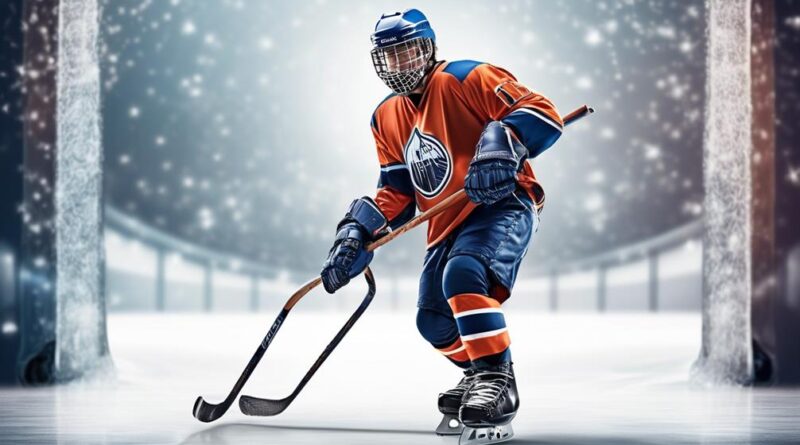Essential Hockey Equipment for Outdoor Play: 9 Tips
When it comes to gearing up for outdoor hockey, having the right equipment is like having an ace up your sleeve. But with so many options out there, it can be tough to know where to start.
That's where these 9 essential tips come in. From helmets to mouthguards, each piece of gear plays a crucial role in keeping you safe and performing at your best on the ice.
But there's one item that can make or break your game, and it's often overlooked.
Helmet
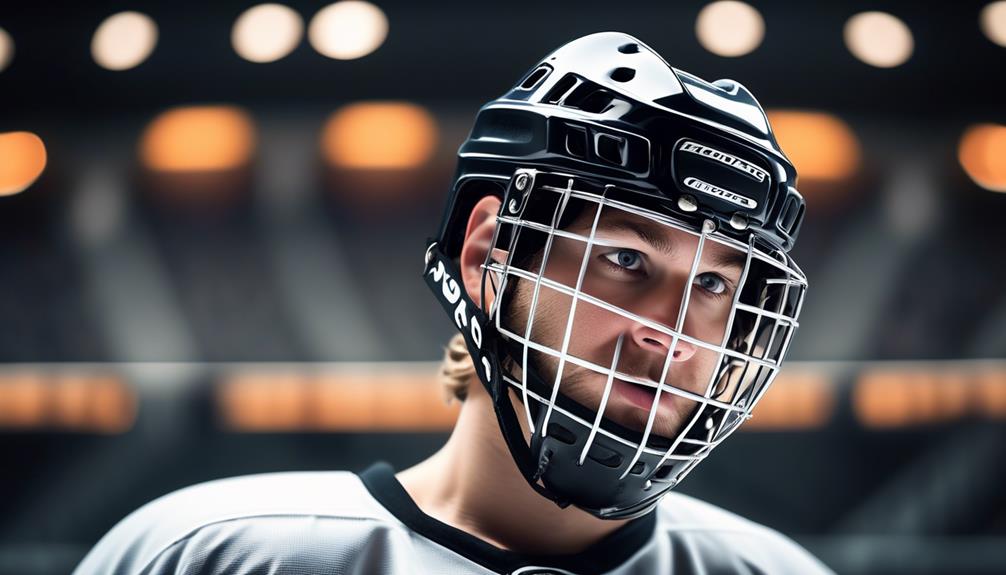
When choosing a helmet for outdoor hockey play, prioritize safety and comfort to ensure reliable protection. The right fit is crucial for helmet safety. It should sit snugly on your head without being too tight, and the chin strap should be securely fastened. A properly fitting helmet won't only provide better protection but also enhance your comfort during play. To ensure the right fit, try on different sizes and models to find the one that feels the most secure without causing any discomfort. Remember, an ill-fitting helmet can compromise your safety on the ice.
Helmet safety is paramount when it comes to playing hockey outdoors. Look for helmets with certifications from recognized safety organizations, such as HECC (Hockey Equipment Certification Council) or CSA (Canadian Standards Association). These certifications indicate that the helmet meets specific safety standards. Additionally, consider helmets with enhanced safety features, such as multi-impact protection and advanced padding systems. It's also important to regularly inspect your helmet for any signs of damage or wear and tear. If you notice any cracks, dents, or other issues, it's time to replace your helmet to maintain optimal safety.
Finding the right helmet and ensuring its proper fit are essential steps in prioritizing your safety and comfort during outdoor hockey play. By selecting a well-fitting, safety-certified helmet, you can enjoy the game with confidence, knowing that you're well-protected on the ice.
Skates
To ensure optimal performance and safety during outdoor hockey play, selecting the right pair of skates is crucial. When choosing the right skates for outdoor hockey, consider the type of blade, boot construction, and fit. Look for skates with durable blades suitable for outdoor surfaces, as they tend to be tougher and more resistant to wear and tear. Additionally, boots with reinforced materials and extra padding can provide better protection and support. It's important to ensure a snug fit to enhance your stability and agility on the ice.
Skate maintenance is essential for extending the lifespan of your skates and ensuring peak performance. Regularly sharpening the blades is crucial, especially when playing on outdoor surfaces, as they can wear down faster. Additionally, inspect the boots for any signs of wear and tear, such as cracks or loose parts, and address them promptly to prevent potential injuries. Proper storage of skates is also vital to prevent rust and damage.
When it comes to selecting the right skates, don't overlook the importance of trying them on before making a purchase. Different brands and models may fit differently, so always prioritize comfort and support. Consider seeking professional advice at a specialized sports store to find the best skates for your individual needs.
Stick
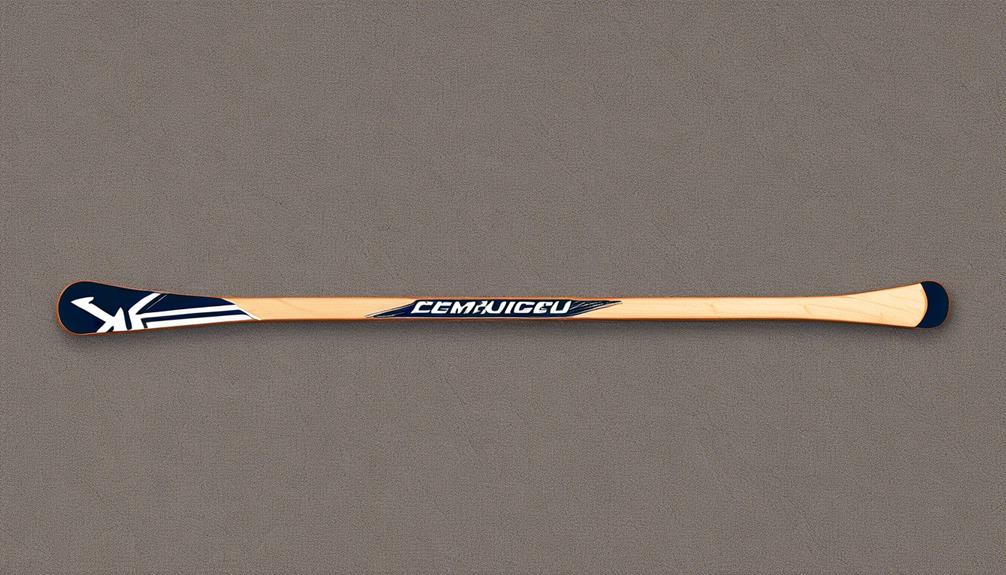
Selecting a hockey stick that suits your playing style and offers the right balance of flexibility and durability is crucial. When choosing a stick, consider the length that works best for you. The standard stick length is typically based on your height, but it's important to find what feels comfortable for your own playing style. A longer stick can provide a greater reach, which is beneficial for defensive plays and poke checks. On the other hand, a shorter stick offers better control and agility, ideal for stickhandling and quick shots. Experiment with different lengths to find the one that maximizes your performance on the ice.
The material of the stick is also a crucial factor to consider. Most sticks are made of composite or wood. Composite sticks are lightweight and offer consistency in performance, making them popular among many players. They also provide excellent energy transfer, allowing for powerful shots. On the other hand, wooden sticks are known for their traditional feel and are often favored for their affordability and durability. They can also offer a good amount of flex, which some players prefer for their style of play. Consider your budget, playing style, and personal preferences when deciding between composite and wooden sticks.
Finding the right stick length and material is essential for optimizing your performance on the ice. Experiment with different options to discover the combination that feels perfect for your playing style.
Gloves
Consider the level of protection and flexibility you need when choosing gloves, as with the stick, finding the right balance is crucial for your playing style. Proper fitting is essential for gloves to provide the best protection and comfort. They should fit snugly without being too tight, allowing for easy movement and grip on the stick. When trying on gloves, make sure they cover your wrists fully to prevent any exposed areas that could be vulnerable to injuries.
Material durability is another critical factor to consider when selecting gloves. Look for gloves made from sturdy materials such as nylon and leather, as these can withstand the rigors of outdoor play. Double-check the stitching and padding to ensure they can endure the impact of puck and stick handling. Reinforced palms and finger protection are also important features to look for to enhance the longevity of the gloves.
To find the right balance between protection and flexibility, consider gloves with segmented padding and flexible thumb designs. These features allow for unrestricted movement while still providing the necessary protection for your hands. Additionally, adjustable wrist straps can help customize the fit and provide extra support during intense gameplay.
Prioritize gloves that offer a combination of proper fitting and material durability to ensure your hands stay protected and comfortable throughout your outdoor hockey sessions.
Shoulder Pads
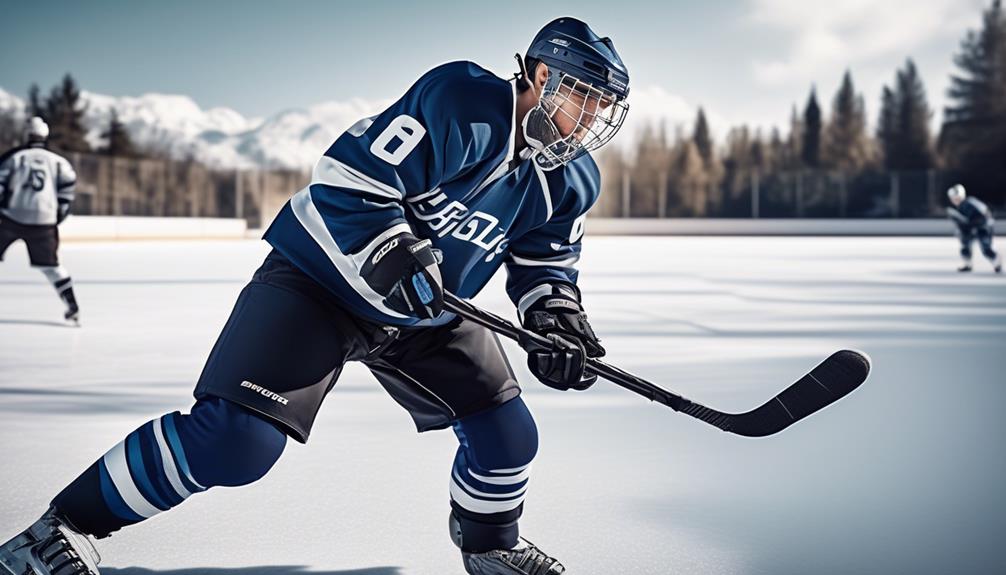
When choosing shoulder pads for outdoor hockey play, prioritize finding a balance between protection and mobility to support your gameplay effectively. Proper fit is crucial when selecting shoulder pads. They should fit snugly to your body without restricting your movement. Look for shoulder pads that come with adjustable straps to ensure a personalized and secure fit. The right fit won't only provide comfort but also ensure that the pads stay in place during intense gameplay.
Impact protection is another key factor to consider. Outdoor hockey play can be more rugged, so your shoulder pads need to offer sufficient protection against collisions and falls. Look for pads with thick padding around the shoulders, chest, and back to absorb impacts effectively. Additionally, some shoulder pads come with reinforced sternum protection to minimize the risk of injury from puck impacts.
When trying on shoulder pads, make sure to test your range of motion. You should be able to move your arms freely without feeling restricted. Opt for shoulder pads that offer a good balance between protection and flexibility. Remember, the best shoulder pads for outdoor play are the ones that offer the most protection while allowing you to move comfortably.
Elbow Pads
For optimal protection and mobility during outdoor hockey play, ensure your elbow pads fit snugly and allow for unrestricted movement. Properly sized elbow pads are crucial in preventing injuries. When choosing elbow pads, refer to the sizing guide provided by the manufacturer. Typically, the size of elbow pads is based on the length between the middle of your bicep and the middle of your forearm. It's important to measure this area accurately to ensure a proper fit.
To maintain your elbow pads, follow these simple tips. After each use, wipe down the pads with a damp cloth to remove any sweat and dirt. If the elbow pads are machine washable, make sure to remove any protective plastic or foam inserts before washing. Allow the pads to air dry completely before using them again. Inspect the elbow pads regularly for any signs of wear and tear. If you notice any damage or deterioration, it may be time to replace them to ensure continued protection.
Remember that properly fitting elbow pads not only provide protection but also allow for a full range of motion, which is essential for playing hockey effectively. Taking the time to find the right size and maintain your elbow pads will ensure that they continue to offer the protection you need during your outdoor hockey games.
Shin Guards
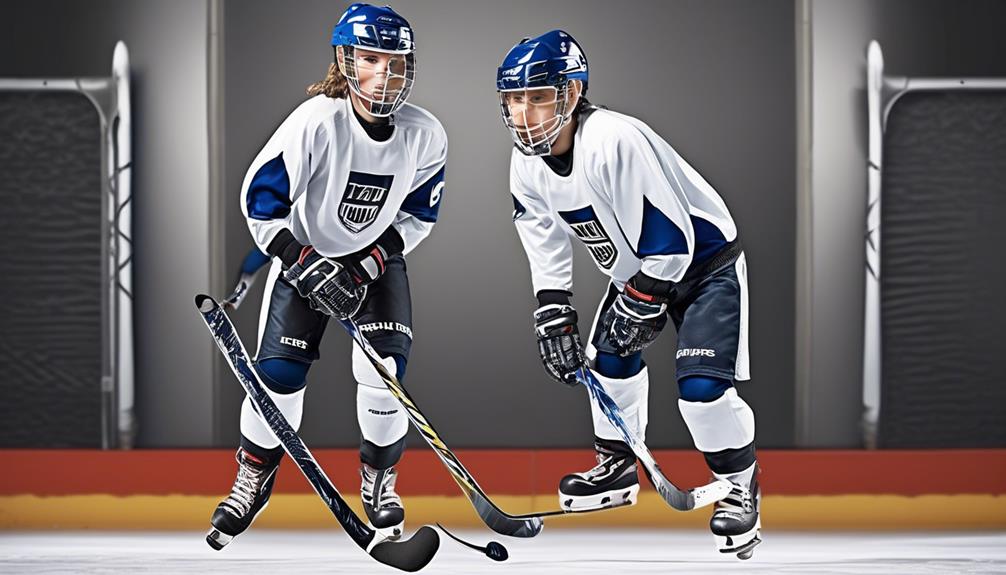
Ensure your shin guards fit securely and provide adequate protection for your lower legs during outdoor hockey play. Proper sizing is crucial for the effectiveness of your shin guards. When selecting shin guards, ensure they cover the entire area from below the knee to above the ankle, with a snug fit that doesn't restrict your movement. Properly sized shin guards shouldn't shift or slide during play, as this can leave your legs vulnerable to injury. It's essential to try on different sizes and styles to find the best fit for your comfort and protection.
Maintenance tips for shin guards are vital to ensure they remain effective and durable. After each use, wipe down your shin guards with a damp cloth to remove any dirt, sweat, or moisture. This helps prevent the growth of bacteria and keeps your gear odor-free. Additionally, allowing your shin guards to air dry thoroughly after each use helps maintain their shape and integrity. Avoid storing them in a damp environment, as this can lead to mold and deterioration of the materials. Periodically inspect the straps, padding, and overall condition of your shin guards. Replace any worn-out or damaged parts to ensure they continue to provide optimal protection.
Mouthguard
To maintain your gear's protective quality, it's essential to consider the importance of a properly fitted mouthguard when engaging in outdoor hockey play. A mouthguard serves as a crucial piece of protective equipment, shielding your teeth, gums, and jaw from potential impact during intense gameplay.
Here are a few key points to keep in mind when it comes to mouthguards:
- Custom vs. Boil and Bite Mouthguards: When selecting a mouthguard, you'll encounter two primary options: custom-fitted mouthguards and boil-and-bite mouthguards. Custom-fitted mouthguards are individually crafted by a dental professional to fit your unique dental structure, offering the highest level of comfort and protection. On the other hand, boil-and-bite mouthguards can be shaped to your teeth by softening them in hot water and then biting down to create a mold. While boil-and-bite mouthguards are more affordable and readily available, custom-fitted mouthguards provide superior protection and comfort.
- Importance of Proper Fit for Mouthguards: Regardless of the type of mouthguard you choose, ensuring a proper fit is of utmost importance. A well-fitted mouthguard should cover all of your teeth without feeling loose or impeding your ability to speak and breathe comfortably. A snug fit is essential for effective shock absorption and preventing the mouthguard from shifting during gameplay, maximizing its protective benefits.
- Regular Replacement and Maintenance: Over time, mouthguards can wear down, compromising their protective qualities. It's important to inspect your mouthguard regularly for signs of wear and tear, and replace it as needed to maintain optimal protection for your teeth and oral structures.
Frequently Asked Questions
What Type of Clothing Should I Wear Under My Hockey Equipment for Outdoor Play?
Wear moisture-wicking compression clothing under your hockey gear for outdoor play. It helps manage sweat and provides support. Layering with breathable, quick-drying materials is key. Choose clothing that keeps you dry and comfortable during intense gameplay.
Are There Any Specific Maintenance Tips for Keeping My Outdoor Hockey Equipment in Good Condition?
To keep your outdoor hockey equipment in good condition, clean it regularly, store it properly, and check for any wear and tear. This will help enhance its weather resistance, durability, and overall lifespan, allowing for prolonged outdoor exposure.
How Can I Properly Adjust My Shoulder Pads for a Comfortable and Secure Fit?
To properly adjust your shoulder pads for a comfortable and secure fit, ensure they sit snugly on your shoulders without restricting movement. Check for proper sizing and make adjustments as needed to prevent any discomfort during play.
What Are the Benefits of Using a Mouthguard for Outdoor Hockey Play?
Wearing a mouthguard for outdoor hockey play offers benefits like protection and comfort. It shields your teeth and jaw, enhancing your performance on the ice. Plus, it minimizes the risk of potential injuries, allowing you to play with confidence.
Are There Any Recommended Drills or Exercises to Improve My Performance With Outdoor Hockey Equipment?
To improve your performance with outdoor hockey equipment, try stickhandling drills and shooting exercises to enhance your skills. Engage in speed training and endurance conditioning to boost your overall agility and stamina on the ice.
Conclusion
So there you have it, with the right essential hockey equipment for outdoor play, you can have a safe and enjoyable time on the ice.
Remember to always wear your:
- Helmet
- Skates
- Stick
- Gloves
- Shoulder pads
- Elbow pads
- Shin guards
- Mouthguard
These items will help protect yourself from potential injuries.
Now go out there and have fun playing hockey!
